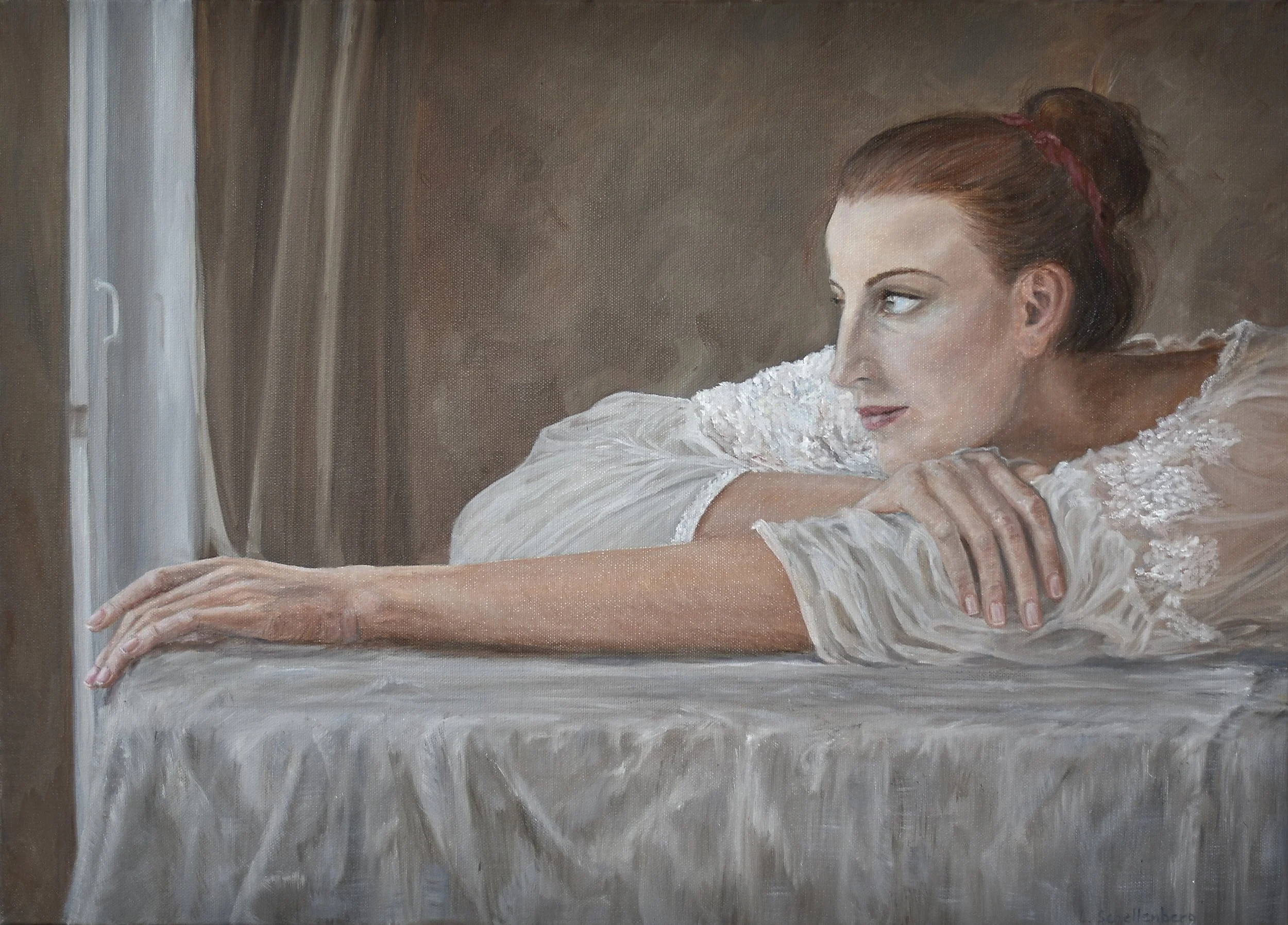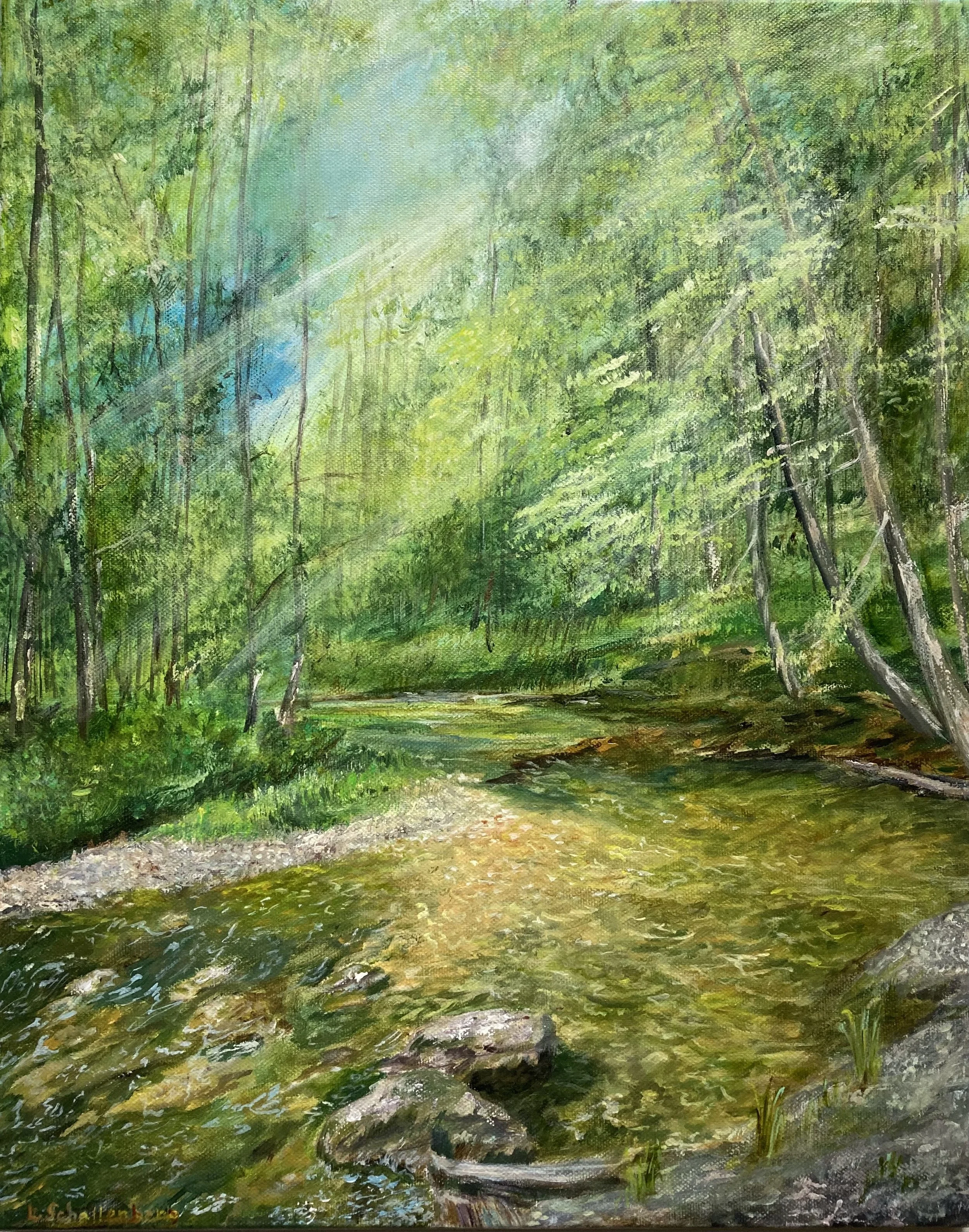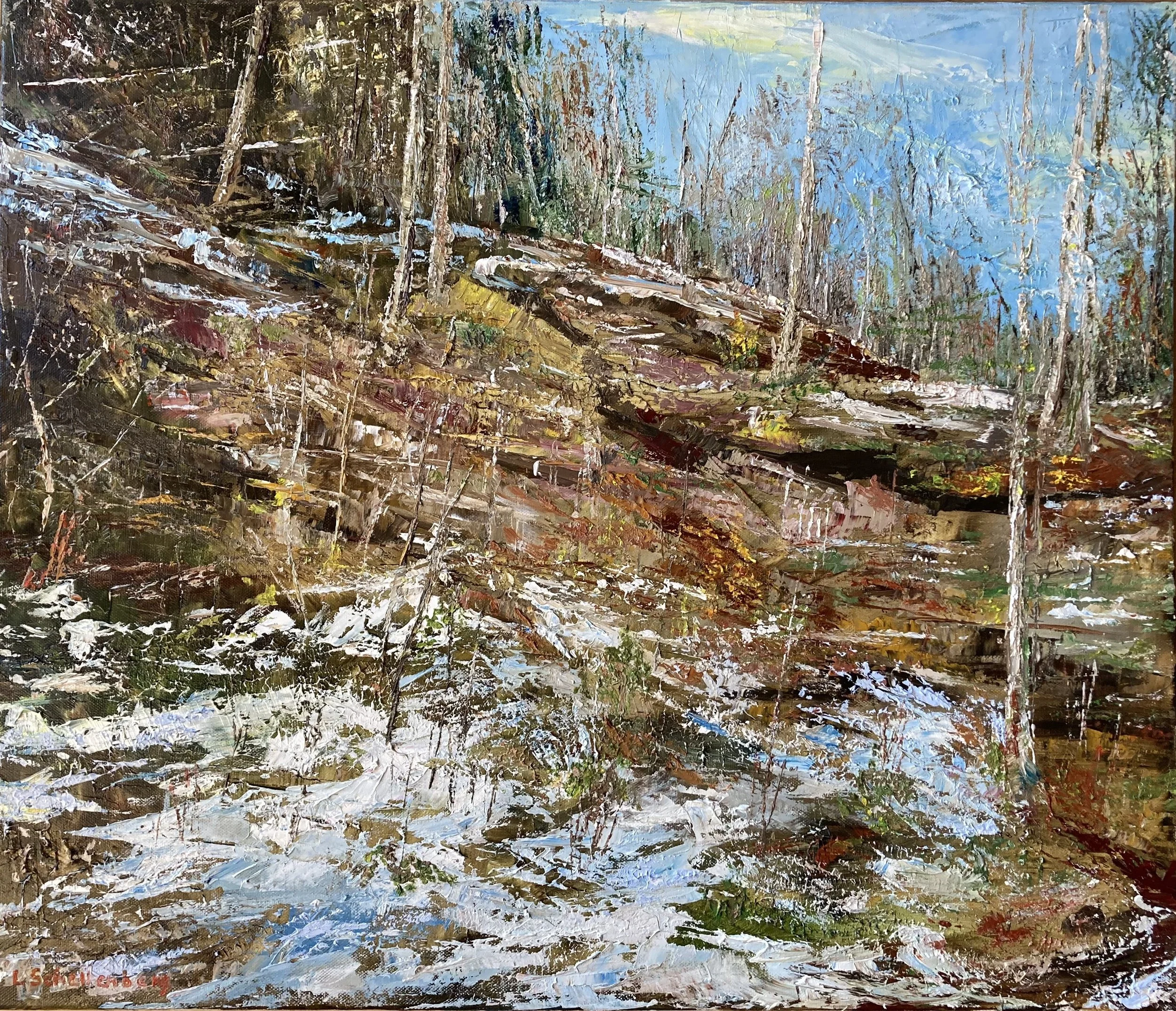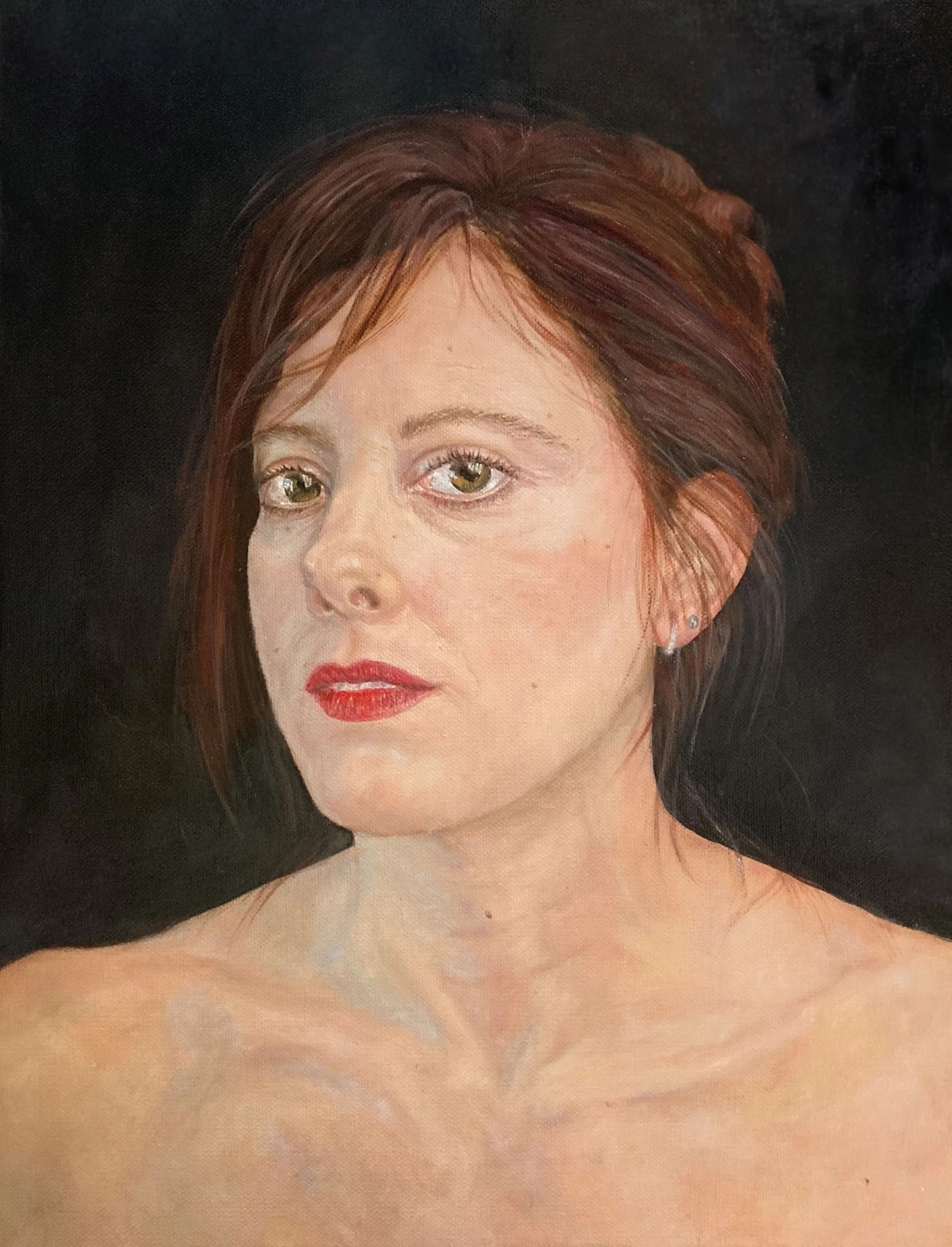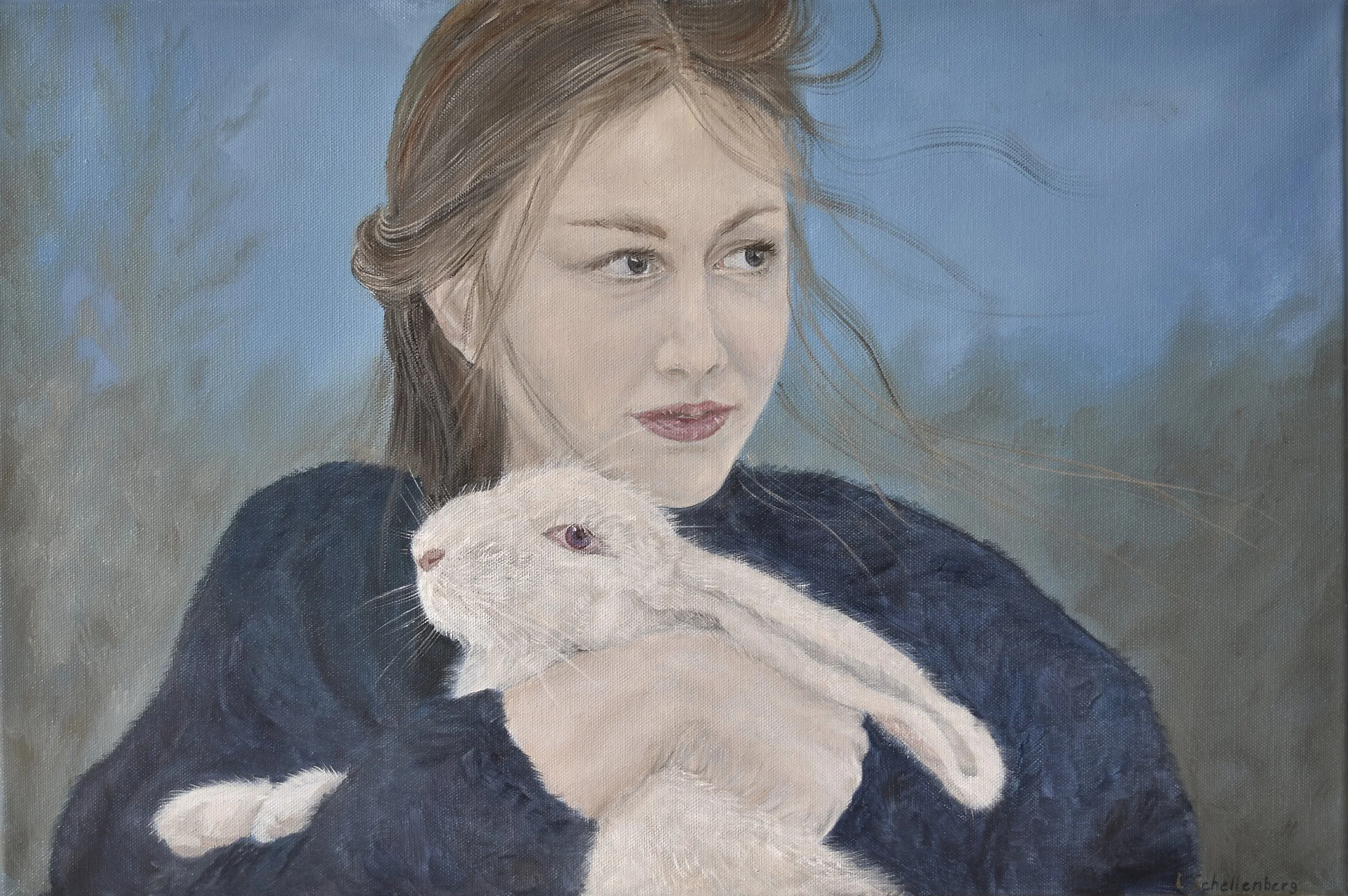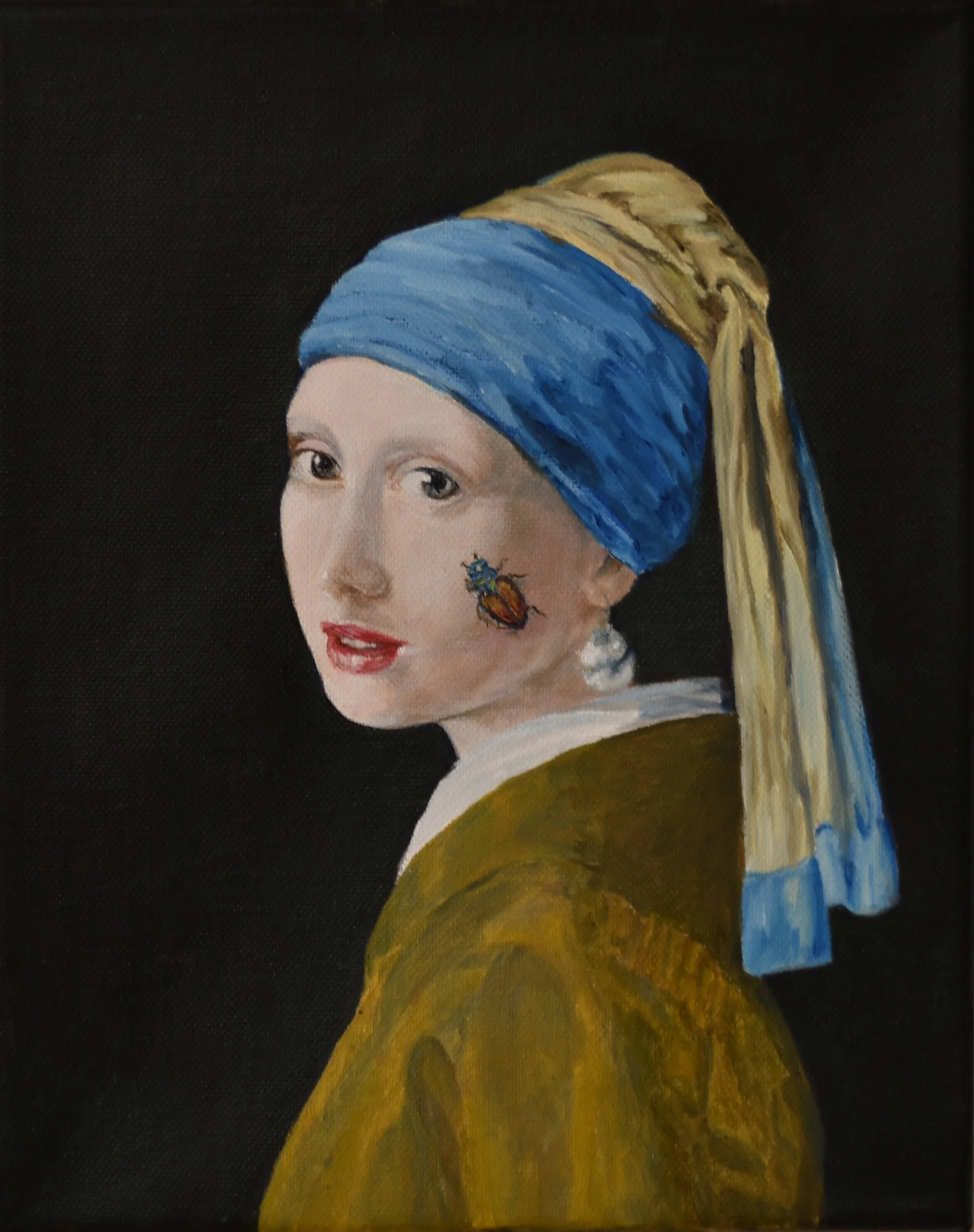Interview with Lusie Schellenberg
Could you share more about your background and journey as an artist? How did you start, and what were some key moments or experiences that significantly shaped your artistic path?
Art has always been present in my life since childhood and in adolescence, I paid a lot of attention to the development of aesthetic taste in my environment (these are museums, books, theaters, seeing the world through the prism of my perception of the world and studying the culture of art).The way I perceive the world and the way my family lives can be called contemplation of art . As I mentioned above, these are exhibitions, museums, paintings, literature, theaters, music, and so on. All this has surrounded me since childhood and has given me great creative energy and fueled my desires to learn how to create in the field of art. The paintings in the museum and the wonderful creations of Renaissance masters played a huge role. To transfer a real picture of the world to canvas and immortalize it all on a sheet or canvas-what could be more beautiful? you can spend hours studying the strokes and tones of color renderings, the beauty of color mixing and technique… My parents took me to art school.. That's how my career began…
Your work aims to "capture the beauty, being, and meaning of all things in their manifestations." How do you translate this philosophy into your creative process, and what inspires you to choose the subjects of your paintings?
Our life is full of colors, changes and it gives us the opportunity to feel the harmony of nature and the world, to feel like a part of the world around us. I understand the importance of nature and its flow of forms from one state to another, this gives an understanding of the feeling of a part of it and makes it possible to realize the needs of the world in my works. Purity, the achievement of perfection, in fact, nature is perfection itself as it is and the harmony of nature reflects the essence of life itself. What is life? Life is not destruction, life is creation, it is a small seed that grows and grows into a huge tree that has fruits and seeds in it. There is always a cycle. And any manifestation of life-in its prime or in its decline –is all fine. Confucius said that there is beauty in everything, but not everyone can see it. I see it everywhere, in the gray sky and the rustle of the grasses, in the imperfection of the lines, in the smile of the child and in the shades of the earth.. I see beauty in any manifestation of reality. Dirt on the street? no, it is a part of nature and amazing shades of colors transferred to the canvas. Grey sky? No, this is the music of autumn in beautiful steel–colored shimmers. It's a flight of the soul when you see beauty in the most ordinary things that people don't even notice, take a closer look and you'll see it. It is this vision of the world that I transfer to the canvas –look how beautiful it all is!
How has your style evolved over the years, and what influences, both artistic and personal, have guided this evolution?
My style has evolved over the years and has been influenced by various influences, both artistic and personal.
At the beginning of my journey , I studied the work of different artists and experimented with different techniques and approaches. I was inspired by the works of such masters as Botticelli, Bryullov, Aivazovsky and Salvador Dali. I studied their work and tried to understand how they conveyed their thoughts and emotions on canvas. I studied their work and tried to understand how they conveyed their thoughts and emotions on canvas. Renaissance artists played a huge role in my style – it was the beauty of realism and careful observation of nature and man in terms of the direction of light falling, ways of transmitting space and constructing a composition. For hours I could look at the paintings of the great masters of that time. Naturally, the Academic School of painting played a big role.. But I also adore the body painting technique-a wide juicy brushstroke, it conveys dynamics, brightness, emotions of a mood or moment-which you transfer quickly to the canvas-These are plenary sketches that do not require much time. The most beloved technique of capturing nature has been around for 35 years . During my studies, I reproduced many works by famous artists, tried myself in avant-garde painting, realized myself in different directions.. In fact, art itself reflects, first of all, a person's perception of the world. And this person is not an artist himself, an artist is a mirror that reflects what is around him, what sounds around him. And the Artist reflects the sound of the world, people, society, everything he is in. An artist, in my understanding, cannot be a hermit and exist outside of society, otherwise he cooks in his own world. And the works do not get a response, because he does not see what the world around him breathes and there is no expression in his works. . At one time, I tried to realize myself in different styles of painting-it's like notes, music that you choose for yourself and look for harmony within yourself. The style in which I am writing my work now (a combination of different techniques and styles that I like) they reflect most vividly my perception of the world around me and my desire to give harmony to the world, even not in tuned notes. Balance, find the balance of the world in my works-balance of color, balance of light, color rendering, tempo, balance of the smallest details with strokes.
What inspires you most when you are about to start a new piece, especially when working across different genres like seascapes, urban landscapes, and still lifes?
I am inspired by the feeling of inner perception of a phenomenon. How it sounded inside me. I would call it the environmental friendliness of art. Art should be eco-friendly. It should allow people to realize themselves in any of their feelings and perceptions of the world as he hears. The world is talking to us-I want to capture this conversation in my works through paints. Reflecting all this in my works, I want to convey to the viewer the interaction of the world with man. It's very simple-flying leaves in the wind inspire you to create a new picture. A girl walking along a broken street, beautiful and light, inspires to transfer this moment of celebration of youth and light to canvas (Amelie's painting).The feeling of accepting the world as it is-and the response in my soul, gives me the desire to fix this moment on canvas, paper, in order to share this moment with the environment later. It inspires the ability to see beauty in those things that may not seem aesthetic. Naturalness . Art is an expression of the inner essence of a person, his world. His harmonies and what lies on the canvas are a reflection of the artist's world.
What do you find most challenging about capturing the 'pristine beauty of existence' in your artworks?
The most difficult thing is time. Reflection of time. In fact, any work of art is static. They do not give an idea of time, of changes. This basic component of our world completely falls out of the picture. Because we have a finished work of ar. It can't be better or worse, it's the way it is. And even at every moment, adding a new stroke, adding a new brush movement – all this puts the final point. It is difficult to depict the passage of time, the movement of life in a painting. The passage of time is irresistible in the painting, it is a fixed moment, but I'm trying to make at least a small brush stroke to convey movement. The difficulty also lies in finding a unique approach and originality in expressing this "primordial beauty of existence" so that it does not lose its power and impact on the viewer. In general, the difficulty lies in finding harmony and unity between the material and the spiritual, form and content, in order to convey the true beauty of the world in their works of art.
Could you share some insights about one or two of your most significant works and the stories or inspirations behind them?
An oil painting is a Dream . This painting is sold, but it has a special meaning for me. The plot is a scene from everyday life, the dreams of a young woman who takes her into the distance.. in front of an open window, waiting for some kind of miracle, which in our modern world we really want to receive.. her hands-she works a lot.. we can guess about the life of this young girl and why she wore this beautiful dress... The theme of the 21st century is when there are many of us and you are alone.. This painting is an opportunity to convey human emotions, aspirations and dreams. An ordinary scene that carries a deep meaning.
A beautiful young woman with eyes full of dreams and hopes. Her hands express hard work and fatigue, but at the same time show strength and endurance.
In the process of working on the painting, I myself began to reflect on dreams and aspirations.
Everyone has their own dreams and hopes, despite the difficulties of life. And many wonderful people are alone in this big world..We don 't know what prevents them from finding the other half . This note of emotion gives the work a special depth and emotional fullness.
As an artist with a traditional approach but a modern sound, how do you think traditional painting techniques resonate with contemporary audiences?
The modern audience, the one who watches my work, is very intellectually developed. She is demanding in her tastes, and she adheres to traditional tastes whenever possible, but also welcomes the mixing of styles with modern trends..
We live in a unique time in which traditional techniques are mixed with modern influences and become resourceful and expressive in their work. This allows you to create unique and impressive works and attract a wide range of audiences. Compared to modern technology, traditional painting techniques may seem more impressive in their technique and skill, sincere and tactile, which may be perceived by a modern audience as an attractive aspect. They are able to create a deep emotional connection between the work and the viewer. Many people appreciate the art of past eras and strive to get in touch with it through original techniques. A painting made in a traditional style can be considered as a kind of bridge between modernity and the past, satisfying to get something special in your desire. In fact, the art of traditional painting has a special aesthetic charm. Realistic images created using the mastery of traditional techniques can attract viewers with their beauty, depth and detail. Even in the age of digital media, where there are many visual art options, classical painting can be attractive to those who are looking for uniqueness and peculiarity and mastery of the brush.
Being featured in prestigious publications like TATLER UK, House & Garden Magazine UK, and Spotlight Contemporary Art Magazine, and having received numerous art awards, how do these accolades influence your career? Do they shape the way you approach new projects or the themes you choose to explore in your art?
Receiving awards in the field of art and publishing in prestigious publications is a confirmation of my professional competence. Recognition as an artist with his own author's style and recognition of my perception of the world, which is expressed in paintings. It brings great joy. And it affects opportunities for collaboration with other artists, exhibition organizers, galleries and art collectors. Thanks to this, the artist's career receives a new impetus and incentive for further development. Of course, mentioning certain works can have an impact on the choice of topics to study in creative work. Success and recognition open up new opportunities for experimenting with a creative approach, as well as for exploring new topics, developing further individual style and searching for new ideas, opening new horizons for professional development.
Who are some of the artists, past or present, who have influenced your work the most, and how do you hope your work will influence future artists?
Leonardo da Vinci is certainly one of the greatest artists of all time. His masterpieces, such as The Mona Lisa and The Last Supper, impress with their technical mastering idealism and anticipate many modern artistic trends. In my work, I will try to create unique works that will evoke emotions and imagination in people. I hope that my work will inspire future artists to experiment and create their own original art. Influencing other artists is a privilege, most of it, but it's a matter of time and does not depend on the wishes of the artist.)))
Looking back on your artistic journey, what are some key moments or decisions that you believe were pivotal in shaping your career as it stands today?
This is a very good question, but I will answer this way - it is difficult for me to look back on my creative path, because I am moving forward. If a person looks back, he will not be able to develop, he will not be able to create something new and unique, so I am moving forward wisely. The past is the past, and we can't change anything there.
Key Points - Education and Self-education: Getting a formal education in the field of art and continuing self-education have been key moments in my career. It helped me to master various techniques and materials, as well as to understand art in general more deeply. Experimentation and innovation: A very significant moment was the decision to experiment with styles, techniques and materials. It helped me to develop as an artist, to find new means of expression and not to stop there. Public exhibitions and participation in competitions: I tried to actively participate in public exhibitions and competitions. It helped me gain recognition from the art community, expand my audience, and establish connections with other artists, galleries, and collectors. My philosophy is to reveal and convey beauty, being and meaning through my works and to see their manifestations in the whole world around us. In order to embody this philosophy in the creative process, I strive to look for depth and emotional content in moments and objects that may be unnoticeable or mundane to others. My goal is to bring these elements to life and transfer them to canvas or paper in such a way that they evoke similar emotions and awareness in the viewer.


